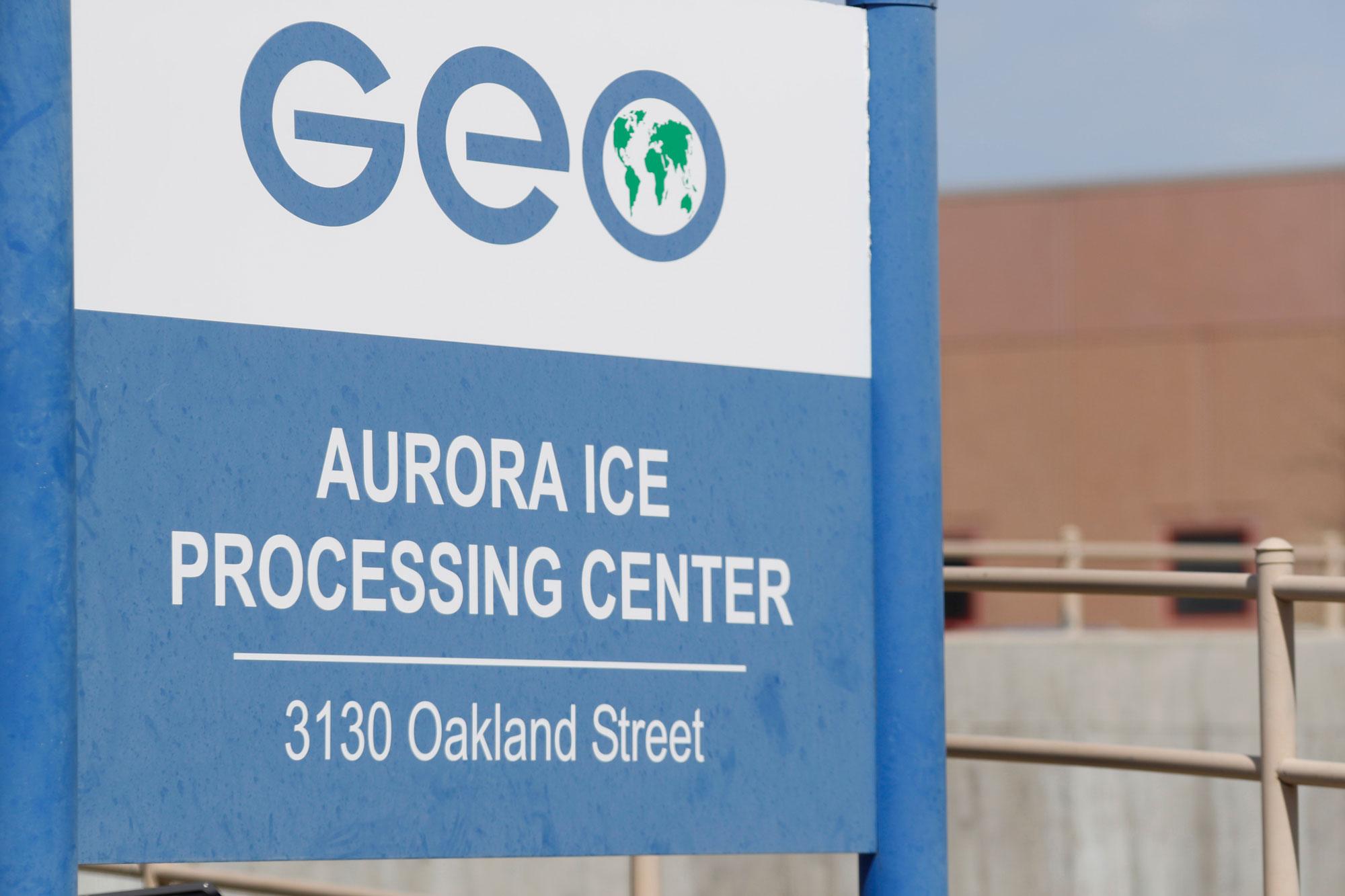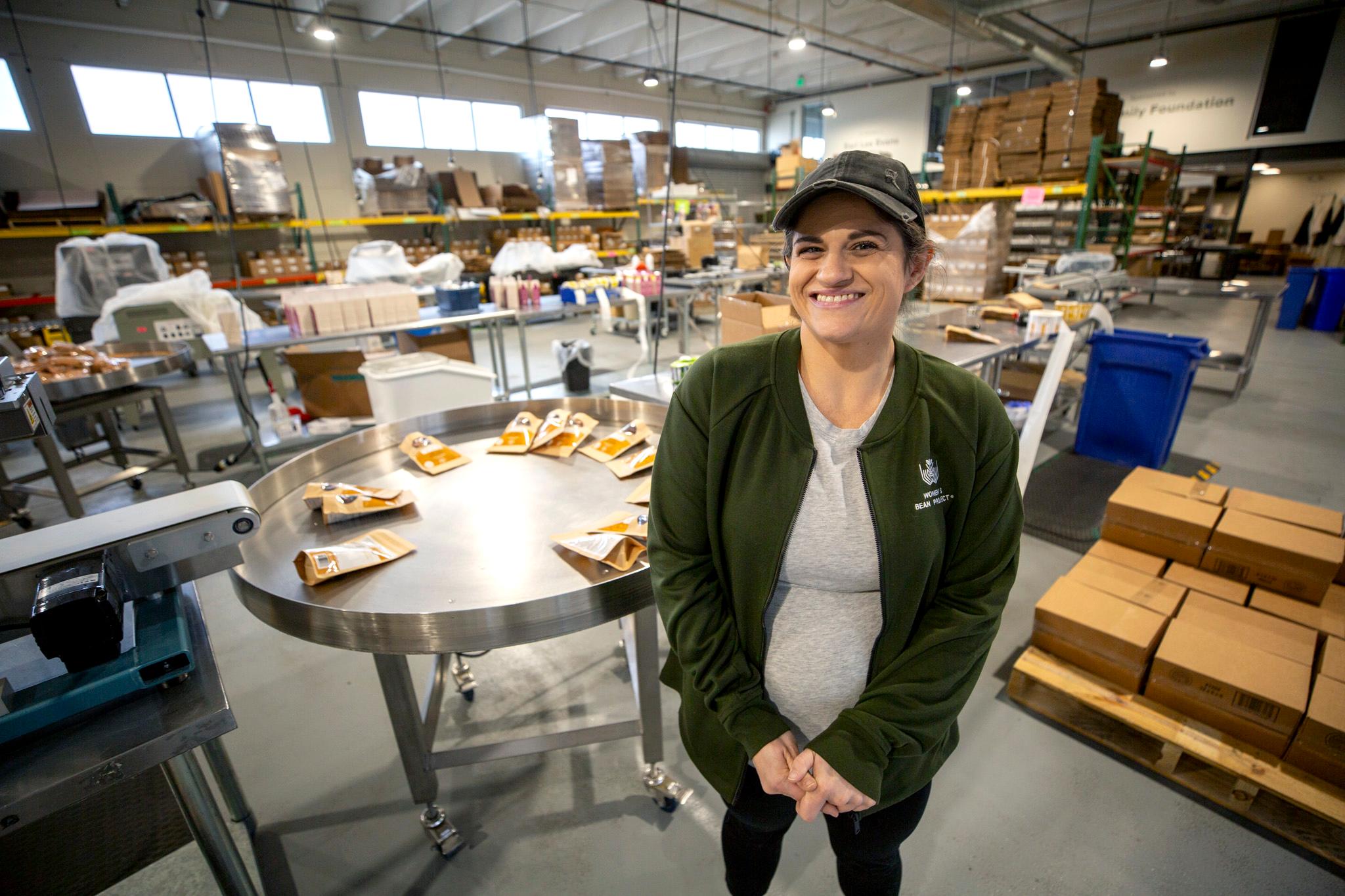

More than 350 immigrant detainees remain quarantined for mumps and chickenpox in Aurora at the federal immigration detention facility — where, on Monday, officials invited Colorado journalists.
The rare tour was meant to demonstrate how the agency is responding to a public health crisis and a huge influx of people seeking asylum at the border.
The privately run federal detention facility has ballooned to hold almost 1,300 detainees after Department of Homeland Security officials decided to temporarily expand the facility to meet a rising need for immigrant detainee beds across the United States.
The contract for that expansion, which is due to expire in April, has been sharply criticized by both local and federal elected leaders. Critics worry the building isn’t properly staffed to handle an additional 400 or more detainees.
“Over the past few weeks, we have heard multiple reports of viral outbreaks that have led to quarantines, a lack of responsive medical care, and disconcerting living conditions in the ICE facility,” U.S. Rep. Jason Crow, an Aurora Democrat, said in a statement.
Federal officials told reporters on Monday that, despite the mumps and chickenpox outbreak, they have a sufficient number of medical personnel on hand. That includes one full-time doctor, two physician assistants, two dentists and 17 registered nurses.
ICE acknowledged they have not hired more doctors despite the 400-bed expansion, but said they would still meet the minimal standards of staffing for detention centers.
The actual number of illness cases have been relatively low — federal officials said they had two confirmed cases of mumps in February. Tri-County health officials said at the end of last month they suspected seven more.
The quarantine numbers have grown over the past several weeks because of the facility’s communal living and the fact that mumps is so contagious.
Officials attribute the outbreak to the large number of people coming up from the border. Mumps outbreaks are common in central America. In September, Honduras declared a state of emergency because of its outbreak.
Of the 350 people currently in quarantine in Aurora, all are expected to get out during March.
U.S. Rep. Crow and members of Aurora City Council have demanded a tour of the facility to ask questions. Crow and Aurora City Councilwoman Allison Hiltz both showed up at the facility unannounced on Feb. 20 and demanded to get in — unsuccessfully.
Crow’s office slammed the media tour on Monday, saying public officials are still waiting to get official word from the Department of Homeland Security on their questions.
“Despite being faced with multiple reports of poor conditions and disease outbreaks, ICE has repeatedly blocked our office from performing basic congressional oversight, including from joining today’s media tour,” Crow said, in a statement. “This disturbing pattern raises the obvious question: why is ICE delaying oversight of this facility? I will continue to push for transparency and accountability until we are allowed a tour of the facility, receive responses to our written questions, and know that ICE is providing the proper treatment and care to its detainees.”
The detention center seen on Monday by journalists had the regular trappings of a state prison: Mostly men meandered around in jumpsuits, and there were places to work out, watch television, do legal research and call family and lawyers.
Detainees were locked up in different colored jumpsuits in different pods. ICE puts the detainees in varying colors to distinguish the “criminal” element. Some detainees have already served time for state crimes — from a DUI conviction on up — and are awaiting deportation. Others are in detention only on immigration violations, or because they are seeking asylum, officials said.
The number of those detained due to immigration violations or seeking asylum from a credible fear in their home countries has skyrocketed in the past year, officials said.
The vast majority of people in Denver’s facility — 94 percent — used to have some criminal conviction.
ICE officials said on Monday they’ve shifted priorities, and now about 800 of the roughly 1,300 detainees are there after seeking asylum or on immigration charges. Most of them have been transported to Denver from the border.
Officials reiterated that being in the country illegally is enough to hold someone while they wade through proceedings in immigration court.
Those wait times are particularly bad in Colorado, Metropolitan State University experts have found, and can extend years.









